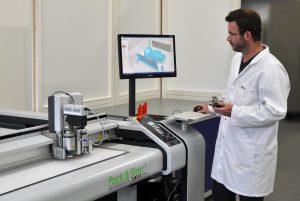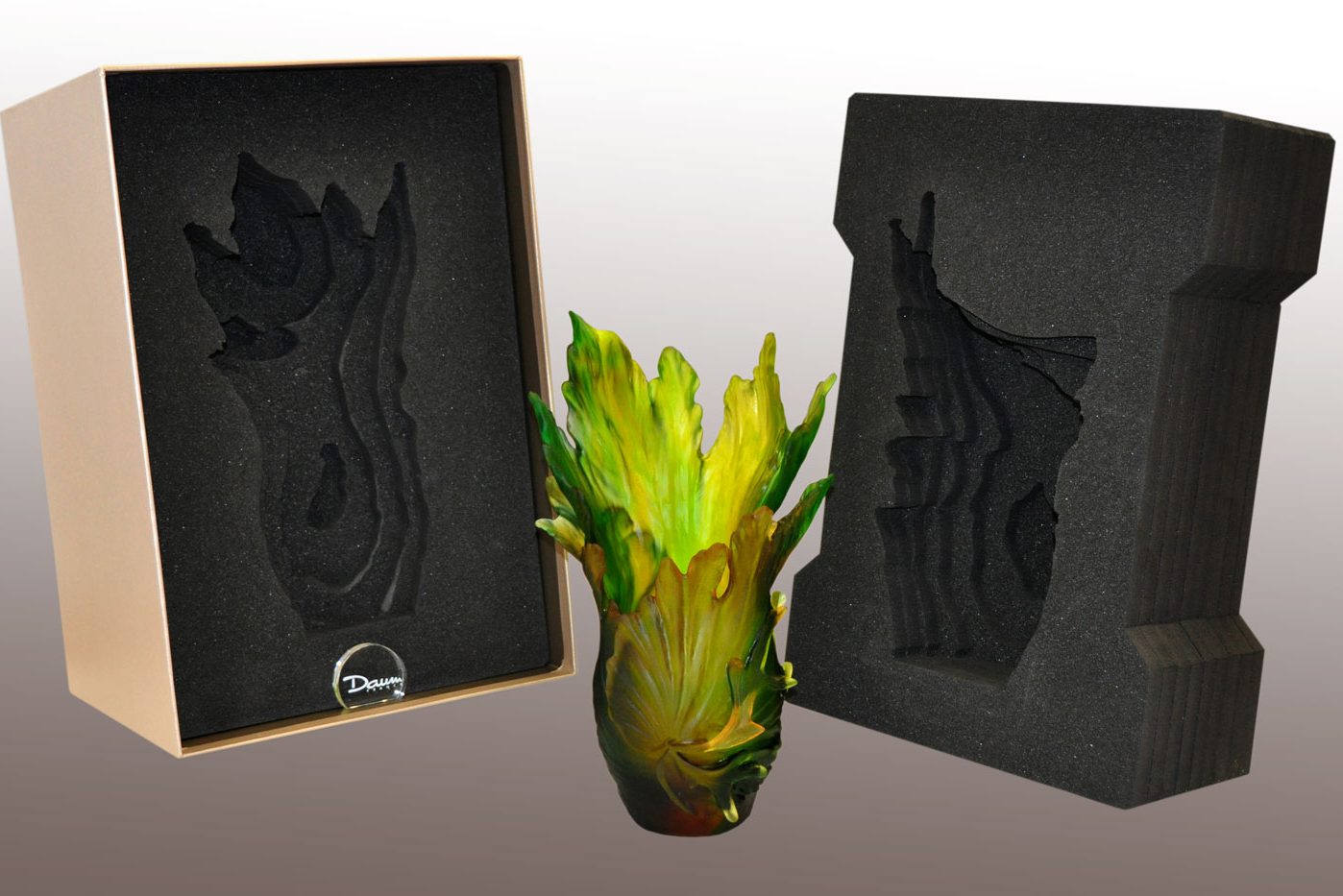INORI packages industrial parts in under 5 minutes
The INORI platform offers a 3D printing process for industrial parts and custom designs the packaging for these parts. Both patented innovations are central to the national and international marketing plan, made possible by the recent funds the platform raised of €1.5 million.
So, you’ve created a piece of art or technical component… but you’re afraid it won’t survive shipping? The solution to your problem is 100% French—and it’s called Pack&Strat®. The process offers layers of packaging that adapts to the shape of any object. The source of this innovation: Stratoconception, the patented process from the Research and Development team at CIRTES, which is also associated with the INORI platform (Innovation sur les Outillages Rapides Intelligents – Innovation in Fast Smart Tools, see box below).
What is the purpose behind INORI? To industrialize and market machine/software pairs for processes in the areas of plastics, advanced machining and additive manufacturing like Pack&Strat®. “We are an industry of the future platform, featuring all the ingredients the name implies: digital software, robots and machines,” explains Claude Barlier, the founder and president of INORI.
The platform currently enables the daily manufacturing of 3D packaging for 70 big-name companies. This includes Airbus, Baccarat, Bugatti, SECO Tools and La Poste. These last three companies installed the processes marketed by INORI in their own facilities. Let’s take a trip back to 1991 to learn how the platform has managed to win this share in the additive manufacturing market.
1991: Stratoconception sets the wheels in motion
It all started with research work carried out in the mid-1980s, and continued with the patent for the Stratoconception process, which was submitted by Claude Barlier in 1991. The process uses a layer-by-layer 3D printing procedure based on a digital file. The part that needs to be produced is automatically broken down into layers. These layers are calculated to ensure the part will withstand the future mechanical constraints it will be subject to. The layers are then “printed” by using a laser cutting system (or another cutting system) before being assembled.
Parts measuring several meters long can be produced this way. In addition, the diverse materials used by the platform (polymers, resins, wood, metal…) open the door to many different applications. “We have manufactured interior fittings for Airbus and others for Zodiac Aerospace, for boats. We create very elaborate technical parts and tools that enabled us to manufacture a full-size coach,” explains Claude Barlier. However, while the method for manufacturing the parts has been successful, there is still a problem when it comes to transporting the merchandise to the customer. “The parts were arriving damaged, which is when we had the idea of expanding our offering and creating 3D packaging adapted to each object,” the president of INORI recalls.
The patented Pack&Strat® process: tailor-made 3D packaging, unique in France
“We create a positive part. Our idea was to make its negative by creating its imprint using the digital file. That is the Pack&Strat® process,” Claude Barlier explains. It consists of software integrated into qualified cutting machines (cutter, milling…). The rest, you already know. The corresponding packaging is printed using the same process that produced the part. The result is a tailor-made cocoon. “We can package every possible and imaginable part by using its digital file or with a 3D scan of the object. The most successful solution uses cardboard. We cut layers out of this material and, in 5 minutes, we can package a part measuring 0.5 meters long,” Claude Barlier explains.
The platform features equipment that is adapted to printing packaging by unit and serial production. It is also committed to a sustainable development approach. It offers packaging made of cardboard, wood, cork, and other existing renewable sheet materials. “We made the decision not to follow the trend of consumables that consists in selling our captive materials in addition to our machines. Instead, we work with all the qualified industrial materials on the global market, which enables us to remain open,” Claude Barlier adds.

Example of packaging produced with the Pack&Strat process– Credits: CIRTES
If the customers are satisfied with the two processes mentioned above, they can then buy and integrate the software offer or the machine/software duo. Marketing these processes is also a central concern for INORI as the platform moves forward. The platform recently raised €1.5 million from its shareholders. This will enable it to boost the national and international business activities and target the industrial parts and packaging sector.
[box type=”info” align=”” class=”” width=””]
The INORI landscape

Credits: CIRTES
The INORI platform is part of the VirtuReal (“from Virtual to Reality”) center in Saint-Dié-des-Vosges. CIRTES and InSIC (created by Mines Nancy, Mines Albi and CIRTES) are also part of this center. INORI was created in response to a national invitation to tender aimed at establishing innovation platforms. “The platform’s objective is to be complementary to INSIC and CIRTES and InSIC in terms of costs, means, and human, scientific and technical skill,” explains Arnaud Delamézière, the director of InSIC. The center’s entire platform covers an area of 8,000m². It houses industrial-sized equipment and pilot machines that make it possible to carry out pre-marketing trials for processes. Its current shareholders are La Caisse des Dépôts, La Caisse d’Epargne Lorraine Champagne Ardenne, CIRTES, InSIC. Fourteen SME manufacturers and key accounts are also shareholders. Visit of the platform here.[/box]





Leave a Reply
Want to join the discussion?Feel free to contribute!